- 注册
- 登录
- 小程序
- APP
- 档案号


MVRDV · 2024-09-27 09:15:00
MVRDV 与香港华艺设计顾问(深圳)有限公司携手赢得了深圳东部坪山体育公园的设计竞赛,项目主要包括一座羽毛球和体育赛事竞演中心、一座新的国家羽毛球训练中心、一座面向公众的全民健身中心和体育公园,以及配套的商业设施。全部共设置了100个羽毛球场,羽毛球运动为设计提供了主要灵感,其中最引人注目的是主建筑羽毛球拍形状的屋顶,约240米长,是整个体育公园的焦点。
MVRDV, working alongside Huayi Design, has won the competition to design the Shenzhen Pingshan Sports Park in the east of Shenzhen, which includes an arena for badminton and other sports contests, the new Chinese National Badminton Training Centre, a National Fitness Centre and sports park for public use, and supporting commercial facilities. With a total of 100 badminton courts across all facilities, badminton provided the inspiration for many components of the design, most notably the 240-metre-long roof in the shape of a racket head that serves as the focal point of the complex.

©Atchain
主建筑由比赛场所、热身场所和国家羽毛球训练中心组成。在公共楼层,三个场馆之间设置了T字形的宽阔长廊,形成气氛活跃的公共空间。在主场馆入口外的走廊交汇处,是一个被称为“甜区”的广场。“甜区”是羽毛球运动中常用的术语,是球拍拍面的最佳击球位置,也延伸为坪山体育公园的设计概念。国家羽毛球训练中心的各功能空间在公共楼层下方实现连通,同时增加了体育科学的研究设施。这种错层设计满足了高水平运动员在不同设施之间移动时对私密性的要求。
This main building comprises the arena, warmup courts, and training courts. A public level features wide promenades in between the three facilities, forming a T-shaped public space to serve as the lively heart of the complex. At the junction of these promenades, outside the main arena entrance, is a plaza known as the “sweet spot” – a reference to the area on a badminton racket that produces the best strike – which also lends its name to the design proposal as a whole. Below the public level is a “lower ground” level that connects together the various elements of the National Training Centre and includes spaces for sports science research. This split-level approach offers privacy to the high-level athletes as they move between facilities.

©MVRDV+华艺设计
概念方案解析
stepped diagrams
主建筑的球拍形屋顶安装了光伏板,为建筑群提供可观的能源支持。屋顶的网格结构让人联想到球拍拍面的网格结构。
Above all of this is the racket-shaped roof that supports photovoltaic panels to provide a significant proportion of the energy used by the complex, while the gridded structure of the roof is reminiscent of the racket’s strings.
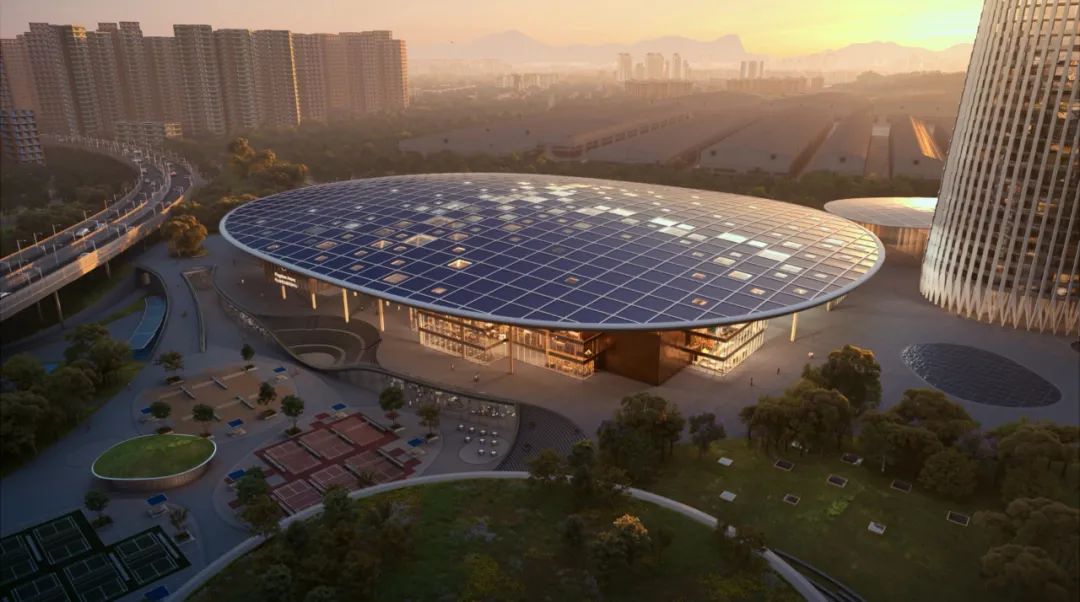
©Atchain
MVRDV 创始合伙人Jacob van Rijs表示:“基于功能规划来看,坪山体育公园未来将能够容纳各种体育运动,但最重要的是,它会成为羽毛球运动的目的地。在方案设计中,我们正面解决了这一要求,采用了‘甜区‘这个直观且有趣的概念,所有人都可以在看到建筑的第一时间体会到这种关联性。同时,团队也非常谨慎地以高效、可持续和宜群的方式解决了这个复杂的项目。我们很高兴能够在这次比赛中获胜!”
“Given the programme of the complex, it was clear that the Pingshan Sports Park should be a real celebration of all sports, but more than anything else, it should be a celebration of badminton”, says MVRDV founding partner Jacob van Rijs. “With the design of The Sweet Spot, we tackled that requirement head-on, with a fun and easily readable concept that anyone can appreciate. At the same time, we took great care to resolve this complex project in a way that is efficient, sustainable, and social. We’re thrilled we were able to take the winning shot in this competition!”
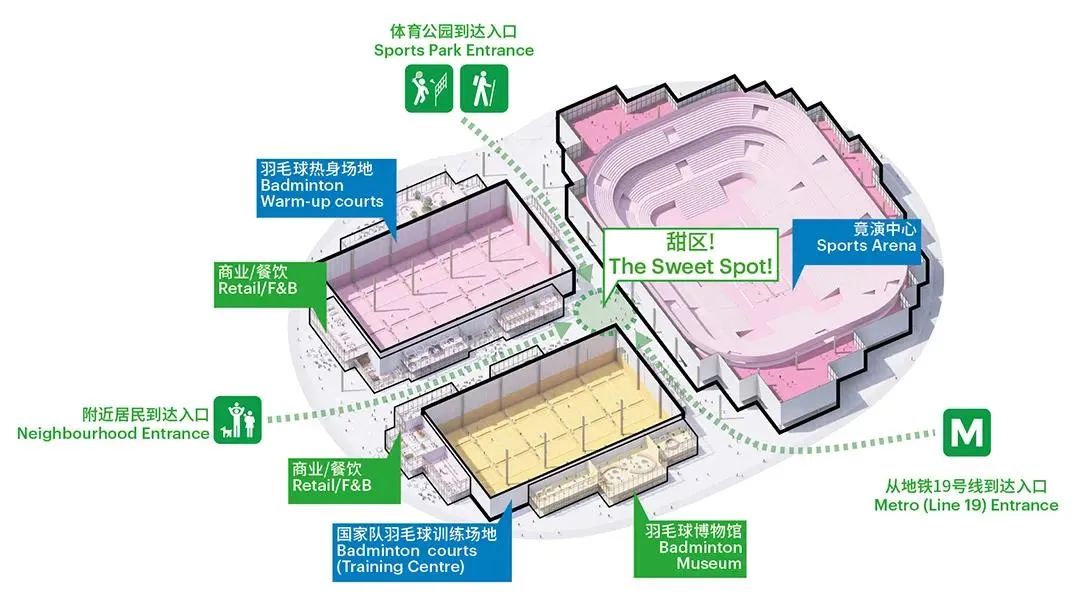
© MVRDV + 华艺设计
主建筑“球拍” - 上首层(58米)轴测示意图
The Racket - Upper Ground (58m)
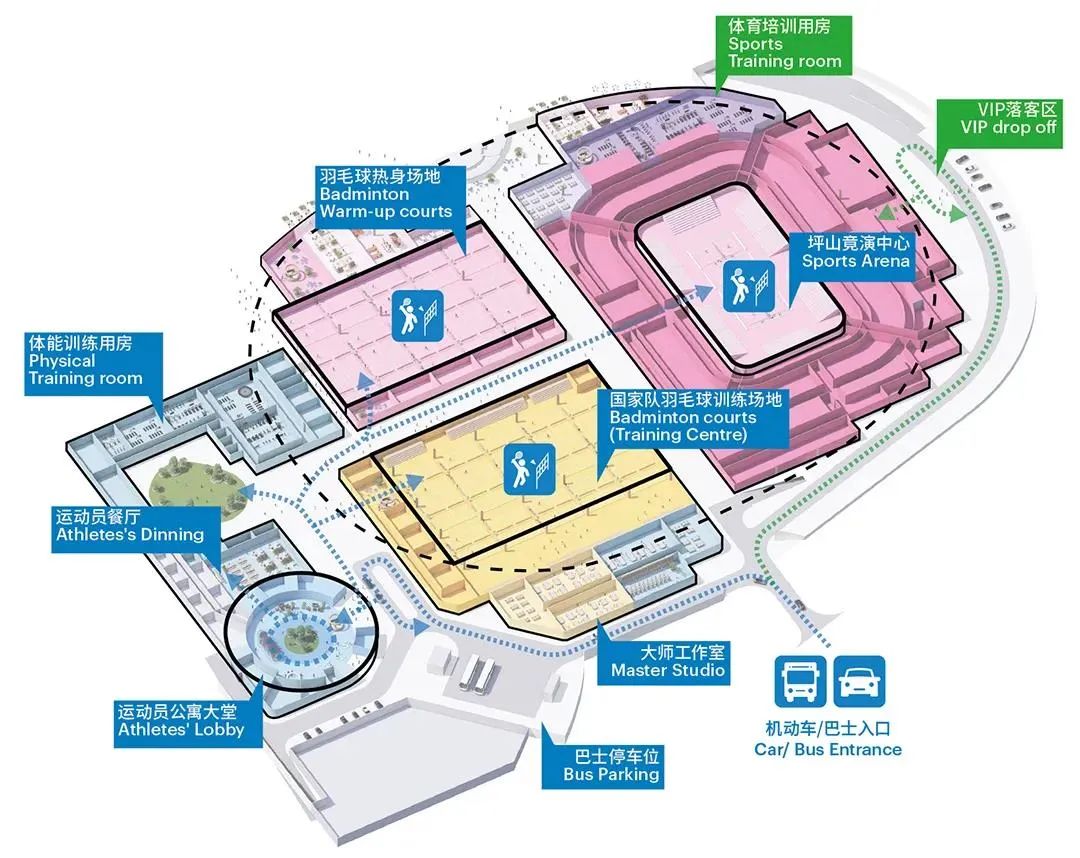
© MVRDV + 华艺设计
主建筑“球拍” - 下首层(52米)轴测示意图
The Racket - Lower Ground (52m)
主楼建筑的正南方是一座 23 层高的锥形塔楼,设计灵感来自羽毛球的形状,塔楼的下半部分是酒店,上半部分则是为运动员提供的短期公寓。塔楼内部设置了双通道层,为运动员提供了私密空间。场地东南侧毗邻两座商业建筑,也采用了较小的球拍拍面的形状。
Directly south of the main building, the complex features a 23-storey tapering tower inspired by the shape of a shuttlecock, which is split evenly into hotel rooms on the lower levels, and short-stay apartments for athletes on top. This building further plugs into the dual access layers to offer privacy to the athletes. Neighbouring it in the south-east of the site are two commercial buildings which also adopt smaller racket shapes.
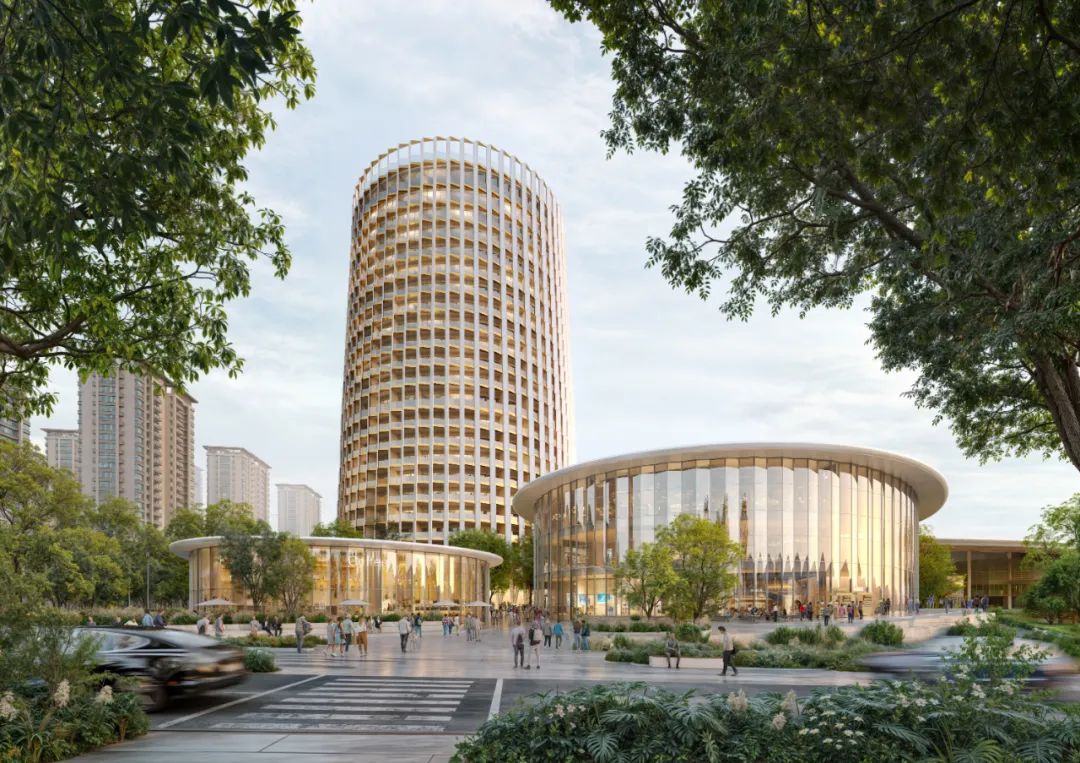
©Atchain
主建筑西侧,公共楼层逐级下降,形成一个可以俯瞰体育公园的大型看台,这里设有大量的羽毛球场、篮球场和足球场,为周边社区带来了丰富的运动场地。区域内还有一座落址在斜坡上的一座较小的球拍形建筑,未来将容纳全民健身中心,为公众提供更多的运动空间,包括羽毛球场、网球场和游泳中心。
On the west side of the main building, the public upper ground level steps down to form a large tribune overlooking the rest of the sports park, which hosts a plethora of courts for badminton, basketball, and football, offering a significant additional benefit to the surrounding neighbourhood. This part of the site also hosts the National Fitness Centre in a smaller racket-shaped building nestled into the slopes of the site, offering the public more badminton courts as well as tennis courts and a swimming centre.

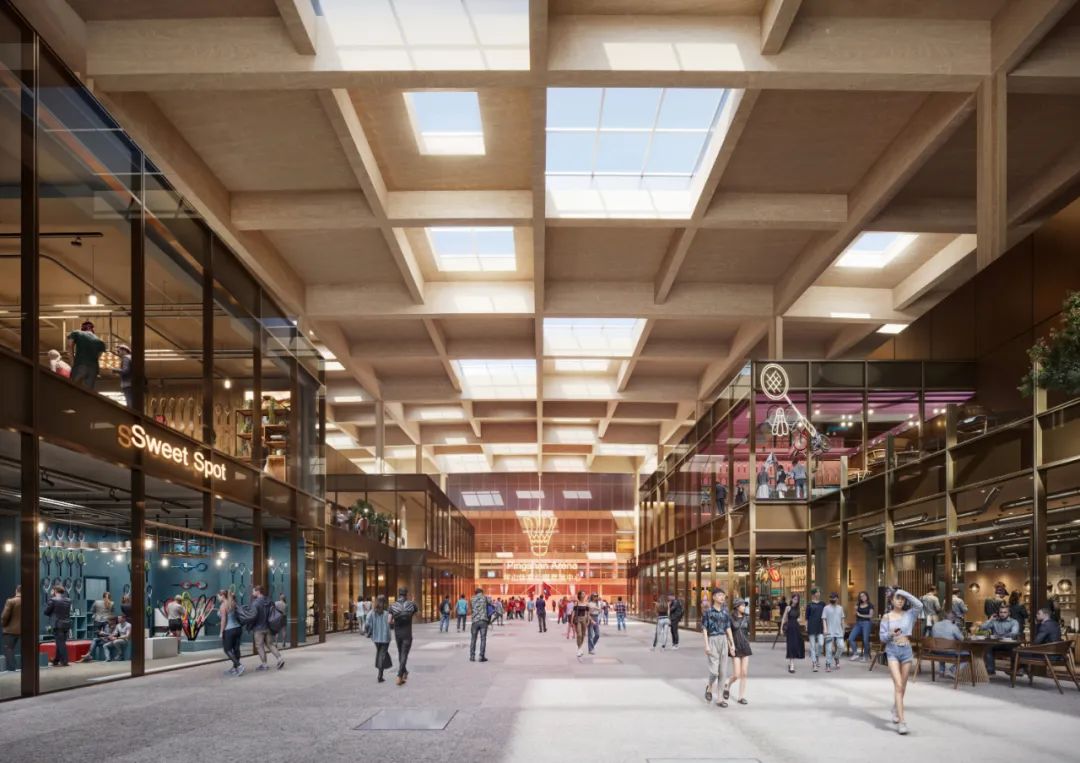
©Atchain
坪盐通道高架桥斜穿场地西北边界。虽然高架桥北侧的地块不在竞赛的范围之内,但MVRDV 还是将这一区域纳入研究范围,将公园延伸至立交桥下方,连接体育公园与贯穿坪山的大型绿色走廊。为了连接公园的两部分,立交桥下方设置了许多户外运动设施,包括滑板公园、迷你篮球场、乒乓球桌、100米跑道和儿童游乐场。
The flyover of the Pingyan Expressway cuts diagonally along the northwest boundary of the site. Although the plot to the North of the viaduct was not part of the competition scope, MVRDV nevertheless included this area as part of their design, extending the park underneath the flyover to connect the sports park with a larger green corridor that cuts through Pingshan. To help connect the two parts of the park, a number of outdoor sports are placed underneath the flyover, with a skate park, mini basketball courts, table tennis tables, a 100-metre running track, and a children’s playground.
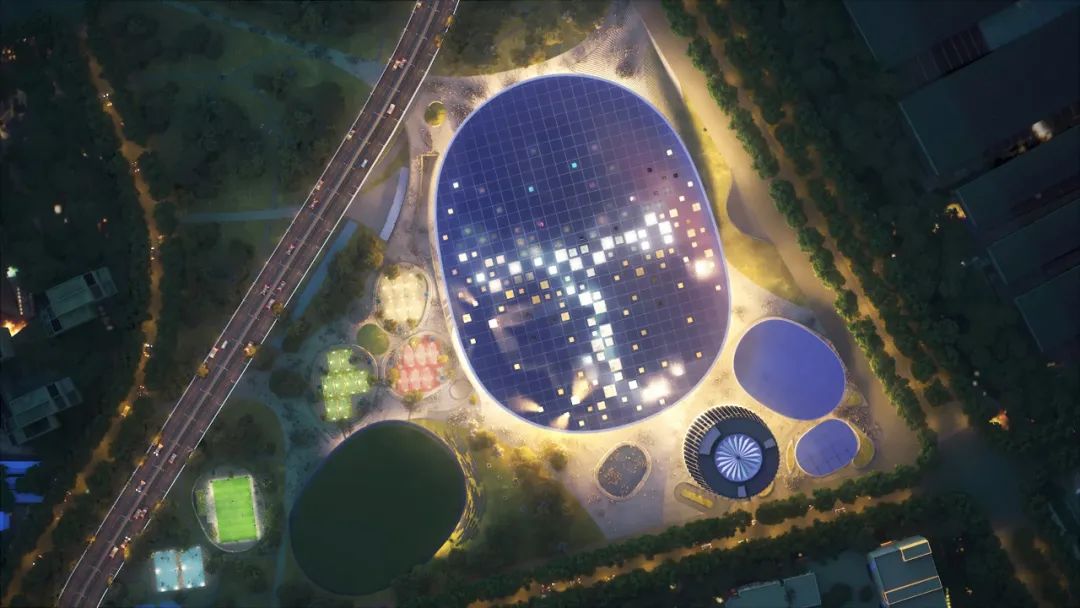
©Atchain
MVRDV 与华艺设计共同勾勒的坪山体育公园为深圳东部的坪山区创造了一个真正意义上的运动景观,让所有年龄和运动水平的参与者都能在这里打球、训练,观看各种球类运动。无论从外形和功能设置来看,它都将成为代表世界一流水准的羽毛球场馆。
At this site in Pingshan, The Sweet Spot creates a true sports landscape, enabling participants of all ages and skills to play, train, and watch a wide variety of sports from badminton to basketball. It will be a world-class facility for badminton, enabled by a design that represents the sport, both figuratively and literally.
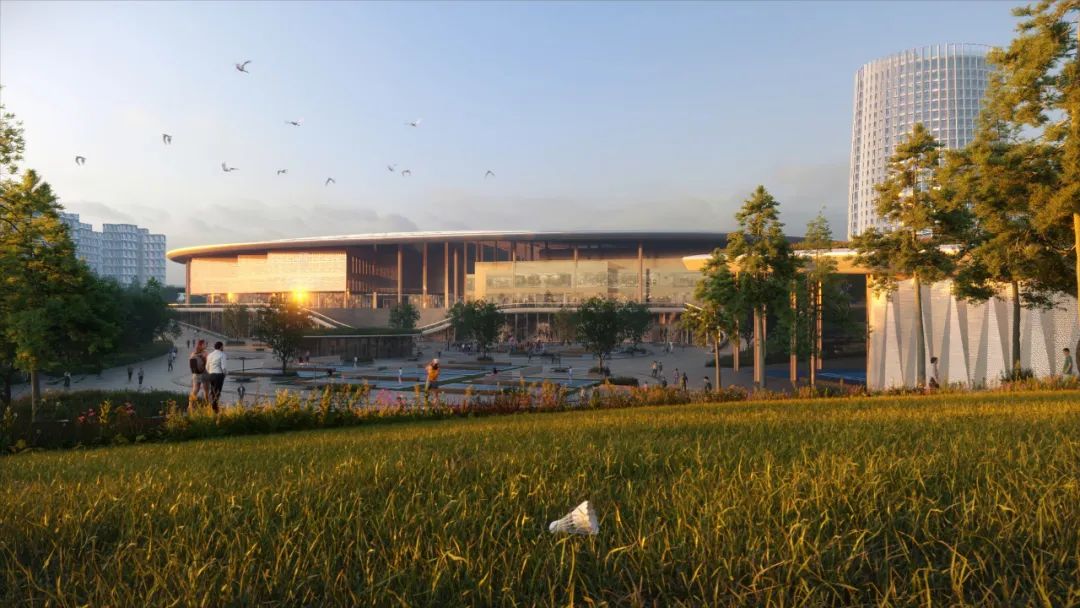
©Atchain
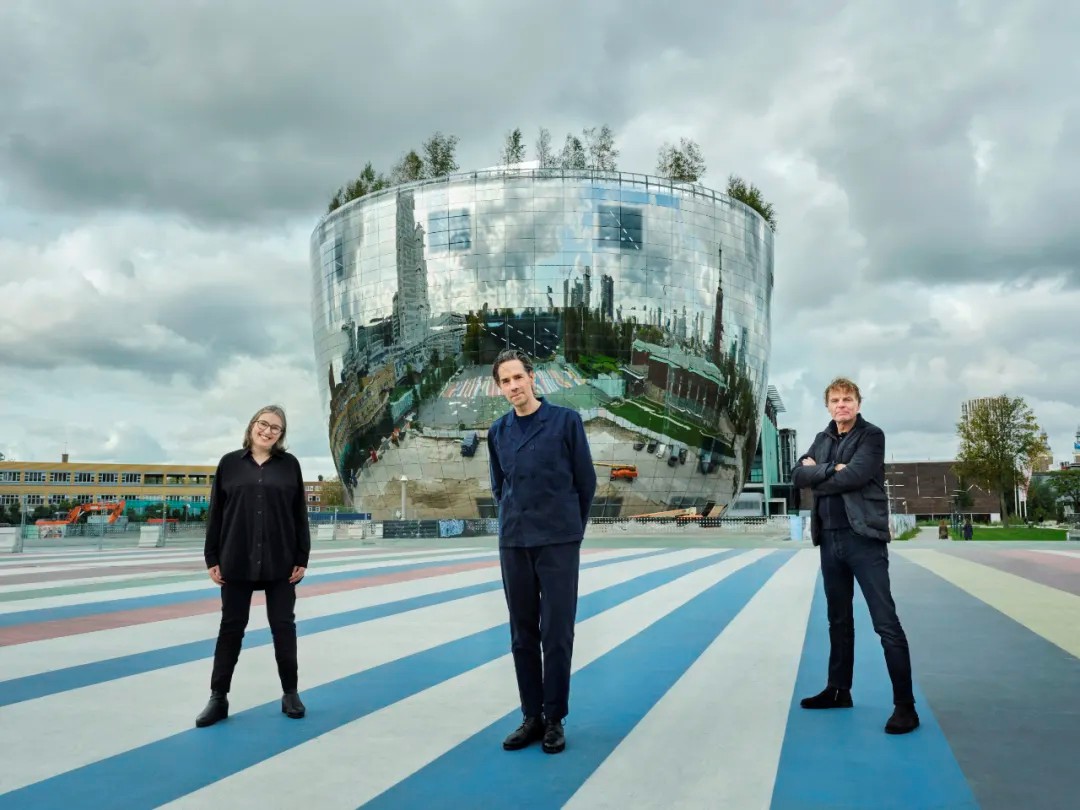
MVRDV建筑规划事务所由Winy Maas、Jacob van Rijs和Nathalie de Vries 于1993年创立于荷兰鹿特丹,致力于为当代的建筑和都市问题提供解决方案。MVRDV的创作基于深度研究与高度协作,各领域的专家、客户及利益相关方从项目初期一直参与设计的全过程。直率而真诚的建筑、都市规划、研究和装置作品堪称典范,让城市和景观朝向更美好的未来发展。
MVRDV的代表项目,如鹿特丹市集住宅、深圳妇儿大厦改造、鹿特丹Depot公共艺术仓库、首尔“空中花园”天桥改造、台南河乐广场,上海宝格丽中国旗舰店,和早期的荷兰公共广播公司VPRO总部、Wozoco老年公寓、2000汉诺威世博会荷兰馆等都获得了广泛的国际赞誉。MVRDV的300余位建筑师、设计师和城市规划师在多学科交叉的设计过程中,始终坚持严格的技术标准和创新性研究。MVRDV采用BIM技术,公司内拥有正式的BREEAM和LEED顾问。MVRDV与荷兰代尔夫特理工大学合作运营独立智库和研究机构The Why Factory,通过展望未来都市,为建筑及都市主义提供发展议程。
MVRDV was set up in 1993 in Rotterdam, The Netherlands by Winy Maas, Jacob van Rijs and Nathalie de Vries. MVRDV engages globally in providing solutions to contemporary architectural and urban issues. A research-based and highly collaborative design method engages experts from all fields, clients and stakeholders in the creative process. The results are exemplary and outspoken buildings, urban plans, studies and objects, which enable our cities and landscapes to develop towards a better future.
Many projects by the office, such as the Market Hall in Rotterdam, Shenzhen Women and Children’s Centre, Depot Boijmans Van Beuningen, Seoullo Sky Garden, Tainan Spring, Bulgari China Flagship in Shanghai, and early works including the headquarters for the Dutch Public Broadcaster VPRO, WoZoCo housing for the elderly in Amsterdam, Dutch Pavilion at Expo 2000 in Hannover lead to international acclaim. More than 300 architects, designers and other staff develop projects in a multi-disciplinary, collaborative design process which involves rigorous technical and creative investigation. MVRDV works with BIM and has official in-house BREEAM and LEED assessors. Together with Delft University of Technology, MVRDV runs The Why Factory, an independent think tank and research institute providing an agenda for architecture and urbanism by envisioning the city of the future.
特别声明
本文为自媒体、作者等档案号在建筑档案上传并发布,仅代表作者观点,不代表建筑档案的观点或立场,建筑档案仅提供信息发布平台。
6
好文章需要你的鼓励

 参与评论
参与评论
请回复有价值的信息,无意义的评论将很快被删除,账号将被禁止发言。
 评论区
评论区